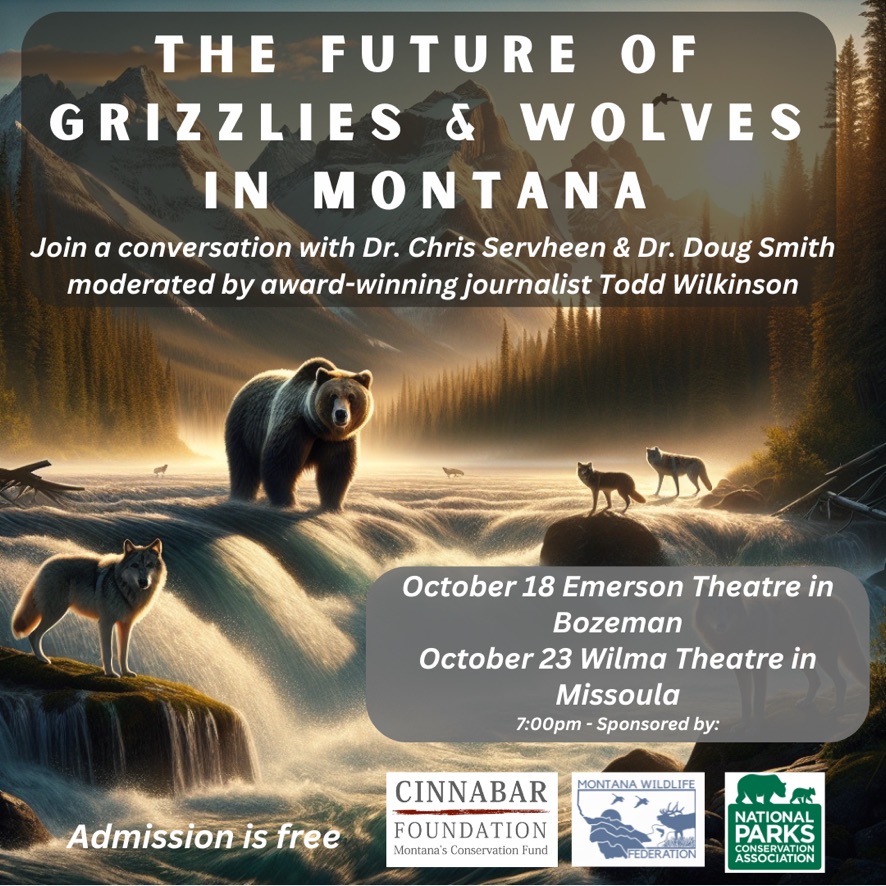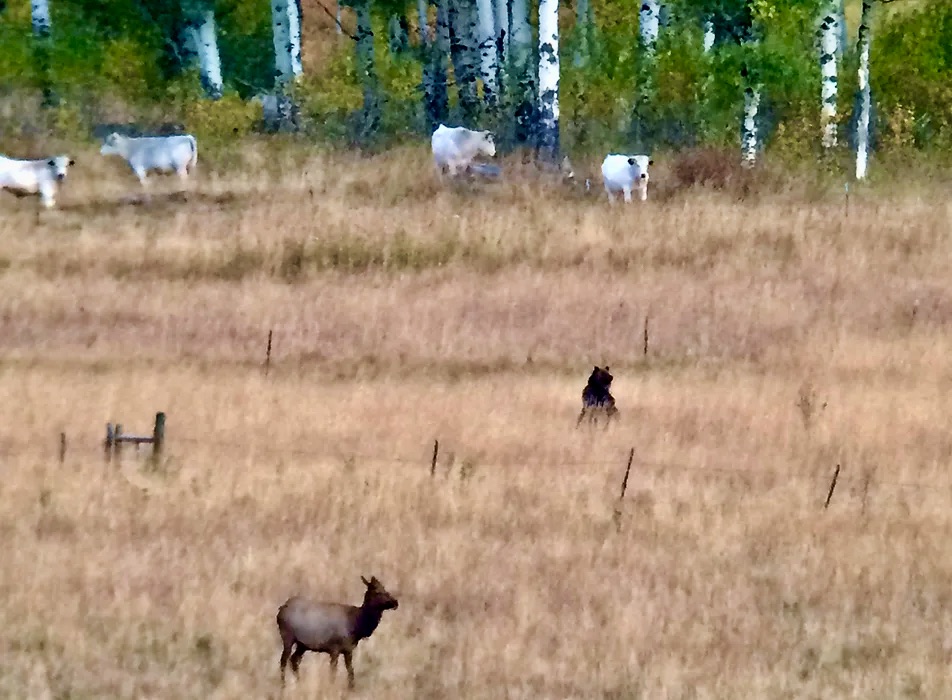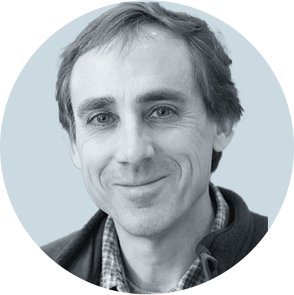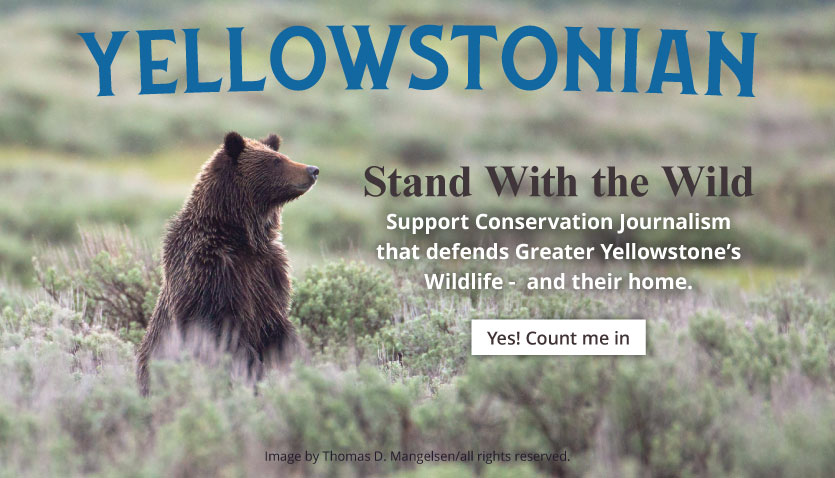by Todd Wilkinson
If you were given a terminal diagnosis and knew you had limited time left, what would you do to make meaning? How could you still try to touch the future?
For Brent Brock, a wickedly insightful scientist living in Bozeman, Montana, there were three priorities besides spending precious remaining moments with his beloved wife, Elizabeth, their dog, Kalluq, and his closest friends and family members.
As a conservation ecologist who specialized in understanding the intricacies of large landscape conservation, Brock wanted the pubic to understand a trio of undeniable truths relating to the Greater Yellowstone Ecosystem and, more broadly, the Northern Rockies biome that stretches from roughly Wyoming’s Red Desert into Canada.
First, Brock said, the public needed to recognize that this region is home to a rare, unparalleled concentration of large mammals and other native wildlife species. It sets our corner of the world apart, is extraordinarily special and must not be taken for granted. But based upon the way it is being treated, he said, neither the public nor elected officials appear to be attending to it with enough necessary urgency.
Brock wanted the public to realize the abundance that presently surrounds us didn’t happen by accident.
Every single one of the large ungulate and carnivore populations that amaze wildlife watchers today was decimated— very nearly wiped out—by human settlement, habitat loss, wanton thoughtless killing and, the big one, ecological ignorance.
It happened coast to coast. Only by implementing foresighted conservation measures, which included creation and protection of public lands, along with passage of federal environmental laws and limits imposed on human greed, were species pushed to the very brink able to recover here. That these magnificent creatures, from bison and elk to grizzly bears, wolves, trumpeter swans, and others—re-flourished in Greater Yellowstone is why this ecosystem is venerated as the cradle of American wildlife conservation.
As Brock explained it, Greater Yellowstone went from holding wildlife abundance (wildness) 175 years ago to a catastrophic decline of species (de-wilding) in a span of just a couple of human generations, and then rebounded to miraculous recovery (re-wilding) in ways no other region has, or could. The main reasons it happened were: again, creation and protection of public lands, enactment of enforceable laws to prevent their despoiling, geographic remoteness and low human population pressure, plus a wide sweep of private lands operating as ranches and farms unfragmented by development.
Yes, without limits put in place to control and regulate human behavior on public lands wildlife conservation could never have succeeded.
Brock’s second message: Greater Yellowstone is no longer remote nor isolated from population pressures, and this has brought a new focus on the importance of private natural lands. The recent inundation of Greater Yellowstone and the Northern Rockies by lots of people, taking the form of inward migration of permanent transplants (retirees and people who can work remotely, wealthy vacation homeowners, and soaring outdoor recreation use) can no longer be ignored. Brock showed me a map of western Montana he had created in 2017 that identified every main and secondary road, as well as recreation trails superimposed on it. There were few places not dominated or nor being regularly and intensively invaded by our species.
While the expanding human footprint has been a major concern to wildlife scientists, few conservation NGOs, local government officials and even public land managers until recently were acknowledging the cumulative effects.
The surge accelerated during the Covid pandemic, catching many of the above off guard, making Brock and colleagues who were tracking the trends realize that the window of opportunity to take corrective pre-emptive action was and is rapidly narrowing. Here’s link to the foreword I wrote for a new forthcoming and unprecedented scientific analysis completed by conservation biologist Leon Kolankiewicz and others on the effects of sprawl on Greater Yellowstone.
At stake is the function of Greater Yellowstone’s globally-renowned wildlife migration corridors for species like elk, pronghorn and mule deer. It’s why our region is likened to an American version of the Serengeti. The ability of those animals to move seasonally between essential habitat is vitally important to their health. Their well-being, in turn, also supports the presence of grizzlies, wolves, mountain lions and others that give the landscapes of Greater Yellowstone and Northern Rockies a wild mystique unlike any other in the Lower 48.
At stake is the function of Greater Yellowstone’s globally-renowned wildlife migration corridors for species like elk, pronghorn and mule deer. It’s why our region is likened to an American version of the Serengeti. The ability of those animals to move seasonally between essential habitat is vitally important to their health.
Sure, the public lands of the Colorado Rockies, the Wasatch and the Sierra may be heaven for human funhogs, but the full complement of native species that make those landscapes really wild aren’t there and because of recreation pressure and lack of human tolerance; meaning the species can’t come back.
In Greater Yellowstone on private lands, Brock looked at the bulging exurban blobs of sprawl occurring in Big Sky and the Gallatin Valley around Bozeman, the scattershot tentacles of development stretching from southern Jackson Hole to the Hoback, Bondurant and Star Valley, and the rural leapfrog development patterns happening between Teton Valley, Idaho northward toward Island Park and the flanks of Henrys Lake, Idaho as troubling harbingers. Intact landscapes are being steadily disassembled by developers who either have no understanding of what they are breaking apart and there’s little evidence of scrutiny being applied to cumulative effects by elected county commissioners and their planning staffs.
“It doesn’t take a genius to know where we’re headed but there’s really no leadership to bring about a course correction,” he told me at my kitchen table in April 2023. “On the path we’re on, the caliber of wildness we have in Greater Yellowstone will, in the years ahead, quickly become a legacy of de-wilding. Because the impacts of sprawl on private land are permanent, the kind of conservation that worked successfully at the end of the 19th century won’t be an option. We won’t be able to reverse the negative effects of sprawl. The time to become concerned, or panic, is not when you’ve run out of options. Once a functional land base is covered in asphalt and concrete, you can’t get it back.”
With more than a little irony, confronting his own existential limit, Brock was offering selfless advice that he knew would outlive him. Real conservation, after all, is about one generation paying forward healthy landscapes to the next. The best metric for gauging their health is the ability of not only wildlife, but undeveloped land, to persist.
Because Brock operated as an independent scientist, he said things others working for government agencies, or hired as consultants by developers to find ways of skirting planning oversight were hesitant to acknowledge out of fear of losing their jobs or being fired.
“We need to be foresighted, every single one of us, because that is the only way we have a chance of saving this place—and we can’t around and wait another decade,” he said. “We need to stop being so greedy, so incessantly focused on our individual self-interest. This is going to require that we change our thinking because if we lose the ability for these species to persist, it will be our own fault—and shame on us.”
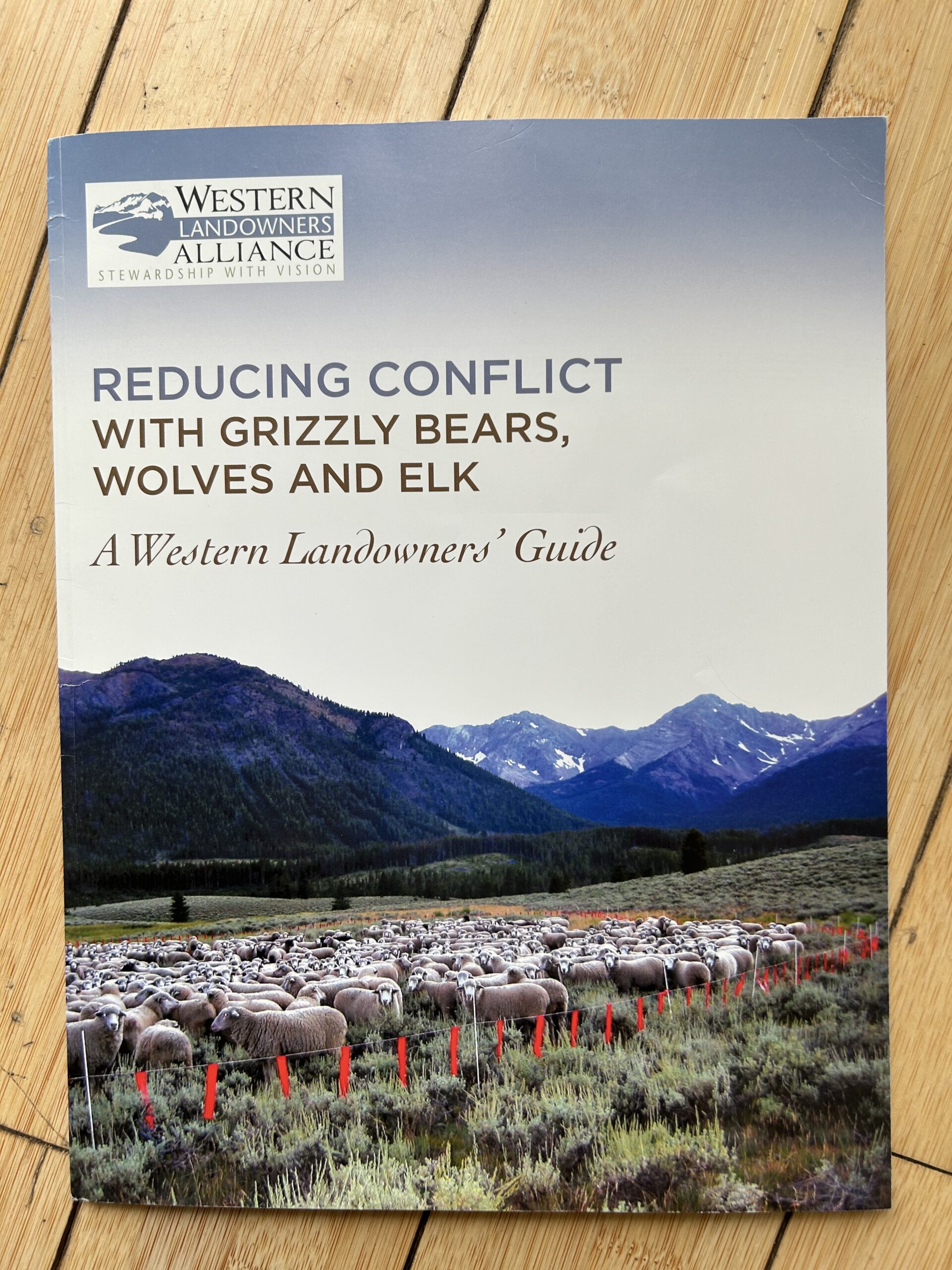
Third, and this where Brock saw glimmers of hope, were in the remaining working ranches and farms of the Northern Rockies—still intact, still interconnected across river valleys and linking one public land to another. They represent the last, best opportunity to stave off species loss. He called ranchers and farmers who have refrained from selling out to developers, heroes. He praised those, growing in number, who have embraced new approaches to stewardship that involves co-existing with wildlife in ways their ancestors had not, especially with carnivores. “We need to do all we can to help them [ranch and farm families] stay on the land because if we fail and the wave of development continues, we won’t have wildlife on the land,” he said. “Rural enclaves of condominiums are a lot worse for what we’re tying to save than cows.”
Together with his professional colleague Steve Primm, Brock, in the last stretch of his life (he passed away, at age 61 on Oct. 2, 2023), worked hard on co-producing a documentary film, Grizzlies and Grazing: The Future of Bears and Ranching. The visual vignette was just released by a conservation organization called the Western Landowners Alliance. Its stated multi-pronged goals: protecting native species; supporting connected landscapes; sustaining working lands; creating healthy public lands; supporting rural businesses; and recognizing the importance of economic vitality that does not come at the expense of conservation.
Hundreds of people tuned in to view a special screening of the video via Zoom in mid September. Only 15 minutes long, it is short, sweet and poignant. The film, produced by Laurie Hedges along with Alexa Montefiore, Primm and Brock, features conversations with ranchers and range riders in Paradise, the Centennial, Big Hole, Ruby and Jefferson river valleys who are showing, by example, what’s possible.
The prospects of grizzly bear recovery will be mightily shaped in the years to come by where development happens on private lands. The same sprawl that displaces grizzlies negatively affects hundreds of other species, including working ranches. There are lots of places to build trophy homes and recreate in the West, Brock said, but nowhere else is there remnant wildlife as it persists here.
Some people curse agrarians. They condemn them for using public lands, for growing cows, sheep, alfalfa and having huge amounts of private ground in irrigated crop monoculture. They lambast them for having been historically hostile to wildlife, especially carnivorous species, and, in some cases, the criticisms are valid. But the vast majority, Brock said, are practitioners and teachers at the forefront of applied ecosystem thinking. They sincerely embrace their role and they provide “a hell of a lot of things the public values: the most obvious is unblighted scenic open space.”
Yet by far the biggest contribution, and vital for people who value wildlife to know, is working ranches provide crucial irreplaceable habitat, the most important being winter range. Their properties are critical connective tissues that hold migration corridors together in all seasons, and their healthy soils and vegetation absorb tons of carbon.
Rural subdivisions destroy wildness and habitat forever. Brock said people who claim to want to preserve wildlife and yet are willing to run ranchers off the landscape are “cutting off their noses to spite their faces. And when they do that they’re playing right into the hands of developers who don’t care what they are destroying. The worst-managed ranch is a thousand times better than a subdivision. A subdivision not only never goes away; it negatively affects lands around it.”
Rural subdivisions destroy wildness and habitat forever. Brock said people who claim to want to preserve wildlife and yet are willing to run ranchers off the landscape are “cutting off their noses to spite their faces.” And when they do that they’re playing right into the hands of developers who don’t care what they are destroying.
As an aside, given that we live in a region where many politicians claim to be fiscal conservatives, there’s an economic argument that complements the ecological one. Protecting for wildlife and ranching makes sense for the constituents elected officials represent. Rural subdivisions exact a disproportionately larger fiscal drain on counties to provide public services than ag land, which means county commissioners who approve rural subdivisions are forcing taxpayers to subsidize profits of the very kind of development they don’t want. In many ways it is the antithesis of “sustainable development.”
Back in 1997, Bozeman-based environmental policy analyst Mark Haggerty wrote: “The findings are clear; farmland and open space provide local governments with a surplus of revenue from property taxes and other revenue sources while residential development drains local government coffers. In fact, studies completed around the country show the same trend: residential land and property demands from $1.02 to $3.25 in facilities and direct services for every dollar contributed in revenue. Agricultural, commercial and industrial land and property [located in or near existing towns] only demand on the order of seven to seventy-nine cents from the local government for every dollar provided in tax revenues. Further, communities that have proportionately more agricultural land making up their tax base also have lower tax rates. This is contrary to the conventional thinking that expanding the tax base by converting agricultural land to urban uses lowers taxes. The increase in revenue comes with a cost, the high cost of new services.” Poignantly, Haggerty wrote his analysis a quarter century ago when Gallatin County had 60,000 residents; today that number has doubled.
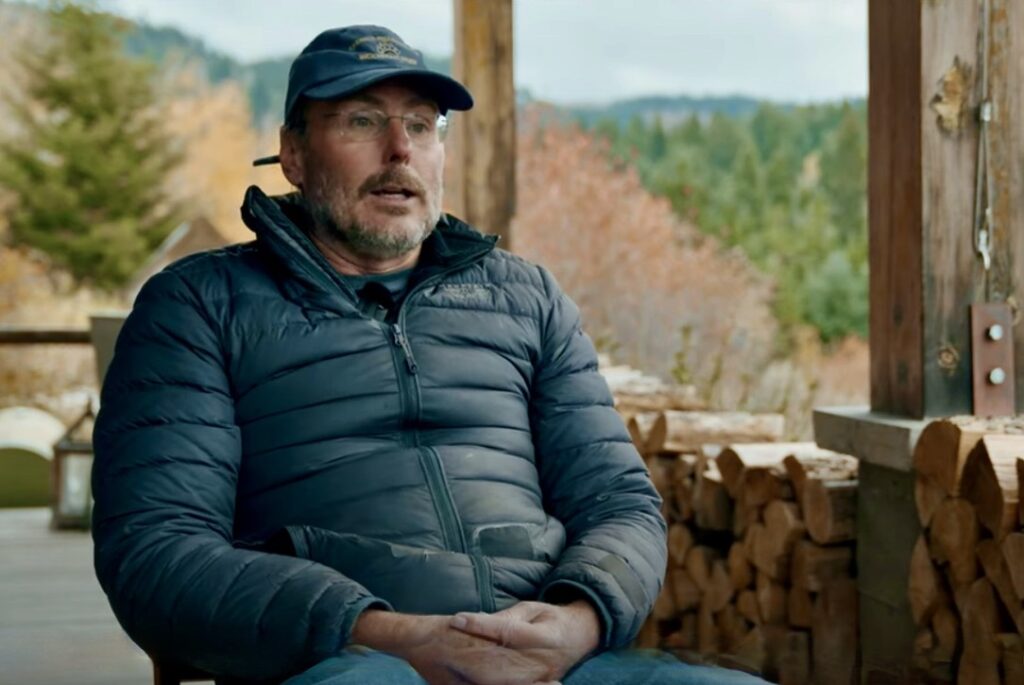
Brock and Primm became a dynamic duo. In recent decades, Primm, who lives in the southern Madison Valley, has earned a stellar reputation engaging working ranchers in the western part of Greater Yellowstone and the adjacent bioregion known as the High Divide Ecosystem. Today he is the carnivore conflict reduction manager for the Heart of the Rockies Initiative that assists rural landowners in the High Divide that extends roughly from Teton Valley, Idaho northwesterly along the shared Montana and Idaho border. Along with its staff and associates providing technical expertise, Heart of the Rockies brings together 29 different land trusts. Another group is the High Divide Collaborative.
“Brent and I and the groups we worked with were committed to keeping landscapes and rural communities intact,” Primm said. “It was obvious to us how all these developments are irreparably damaging the ecosystem and they are proliferating quickly.”
If you were lucky enough to know Brent Brock, then you know how rare he was—a data cruncher, field researcher who ground-truthed his insights and a conservation biologist unafraid to issue warnings about what is coming. In the final months of his life, he rose and rallied, day by day, serving as an inspirational catalyst for scientists, landowners, NGOs, and public officials willing to listen and heed his advice that we need to wake up before it’s too late—before we lose the essence of the region.
The film advocates for a no-net loss of critical working ranchlands. In the film’s parting message, Brock is sitting on the back porch of his home and he is asked how he would measure success in protecting wildlife and the private working landscapes it depends upon: “When I look at the Greater Yellowstone Ecosystem, what does success look like in this area? That’s an easy one to answer. It looks a lot like it does right now.”
Brock’s advocacy for wildlife was his way of touching the future and it put him in the noble company of those who protect, rather than destroy, the homes of those species. They are the enduring heroes of the true still-wild West.
